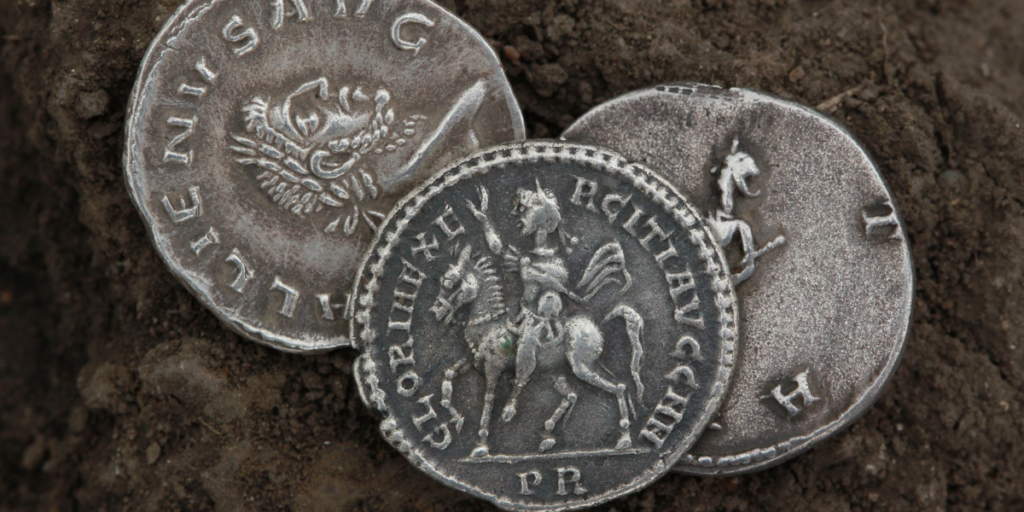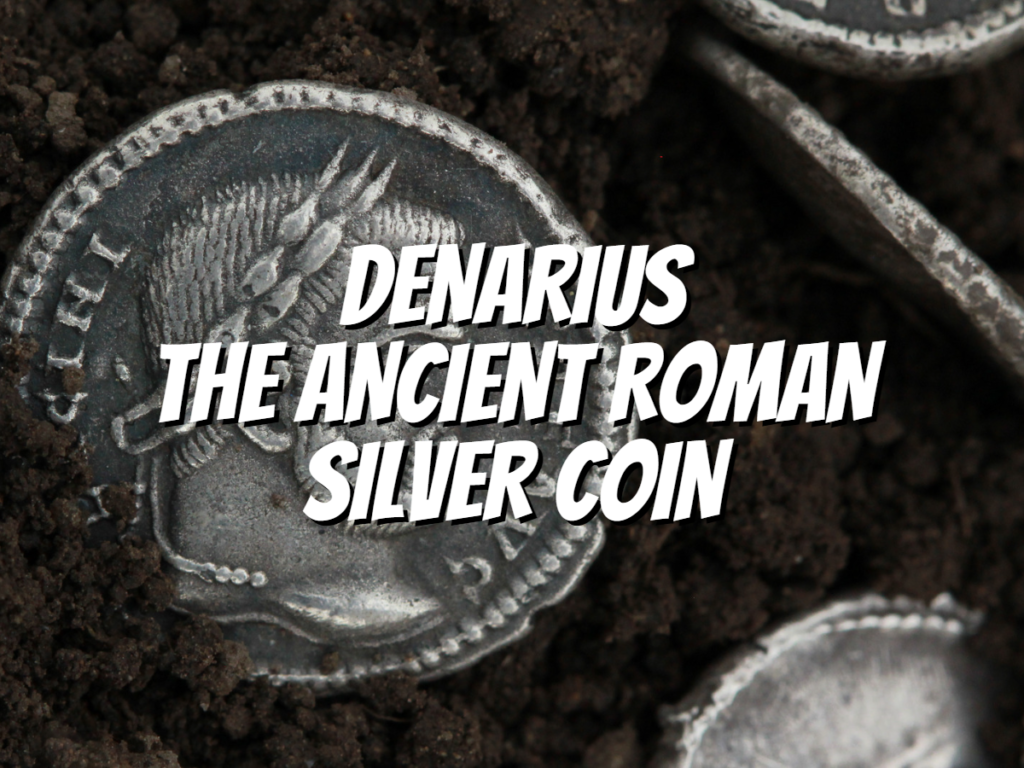Did you know that the Roman Empire was responsible for developing some of the earliest forms of currency?
The Denarius was one of the coins of the Roman Empire, and it is worth a lot today!
This article will examine this coin, its history, and some important details! What are we waiting for? Let’s dive right in!
History of the Denarius

The denarius, my friends, was the very first silver coin. And let me tell you. It served as the primary currency of the Roman Republic for a whopping 200 years.
In 211 BC, they began minting these coins as Rome underwent many changes. Throughout the centuries, Rome was ruled by kings.
After seven long years of civil war between two rival families due to a succession crisis, the empire was finally established under the rule of Augustus Caesar.
Augustus Ceasar introduced many reforms to Roman law and government as an emperor, which are still in use today.
I would like to mention a reform that was implemented during his reign. The reform involved setting up uniform standards for weights and measures across the empire.
As part of this, standard denominations were introduced for gold coins (known as the aureus) and silver coins (known as the denarius).
The main currency of the Roman Republic was Denarius, which was utilized to pay for goods and services.
And it was also used as a means of paying taxes. Well, you see, denarii were typically made using silver as the main material back in the day. However, in certain situations, gold could also be utilized.
During wartime or emergencies, when many people needed more coins than usual, professional moneyers minted Denarii.
They distributed them throughout Rome for daily use and as gifts on special occasions like birthdays or weddings.
Birth of the Coin
In 211 BC, Gaius Marius introduced the denarius coin as part of his reforms to the Roman monetary system.
The denarius was named after its value at the time: ten asses (usually written as X). This made it worth two and a half times more than any Roman silver coin. The denarius was minted for over 200 years until Emperor
Augustus changed its weight to 4 grams and its purity to 92 percent silver (48% pure gold). The new version came to be known as an aureus.
Composition
The denarius was made entirely from silver for about 200 years until it became diluted with other metals (copper, bronze).
This meant there wasn’t as much silver in the coin; therefore, it was worth less. However, the denarius still had a high value because it was still made of valuable metals.
The denarius continued to be used as currency until around AD 270 (the end of the 3rd century) when inflation hit hard, and people started using larger denominations like AE2s instead because they were easier to carry around in their pockets or purses without feeling weighed down by heavy metal!
The Denarius was one of the most important coins in the ancient world.
From ancient Greece to medieval Europe, many civilizations and empires used it as a currency. So if you have one, you’ve got a piece of history!
Changes in Denarius Coin

Although the denarius was made out of silver for over 200 years, it began to shift to being just a bronze coin with a thin coating of silver. This is because silver became more expensive than copper, used to make denarii.
So the Roman government added other metals, such as zinc, tin, and lead to make money from the coins.
This explains why some ancient Roman coins look like they’re made out of gold but are only bronze with a thin layer of gold paint on top!
Dawn of Denarius Coin
The denarius was minted from the beginning of the Roman Republic to the end of the 3rd century AD, with a brief interruption during the civil war after Julius Caesar’s assassination in 44 BC.
However, there is no evidence that any denarii were minted between 211 and 207 BC. Many historians believe this was because there was not enough silver in Rome to make them.
The first denarius coins were produced in Rome and other parts of the Roman Empire by various mints controlled by different individuals or groups.
The first emperor, Augustus, reformed this system so that only one central mint produced all-new coinage throughout his empire (this may have been done as part of his reforms).
When he died in 14 AD., his successor Tiberius continued using this system but added his mark (a “TI” on one side) to all new coins, which made them easier to identify as belonging to him rather than someone else.
Before you go…
So there you have it! I hope this article helped you answer your questions about the Denarius coin. If you have any suggestions on what topic should we cover next, leave them in the comment section! Happy Collecting!
Check out my next article: “No B*llshit Guide To Collecting Roman Coins.“
Related Articles:

